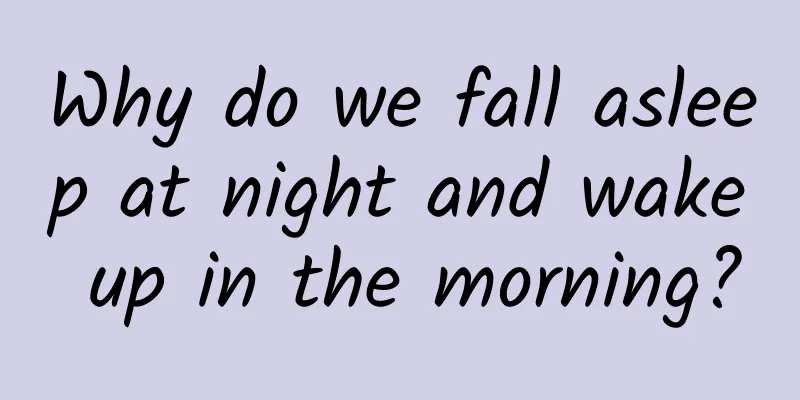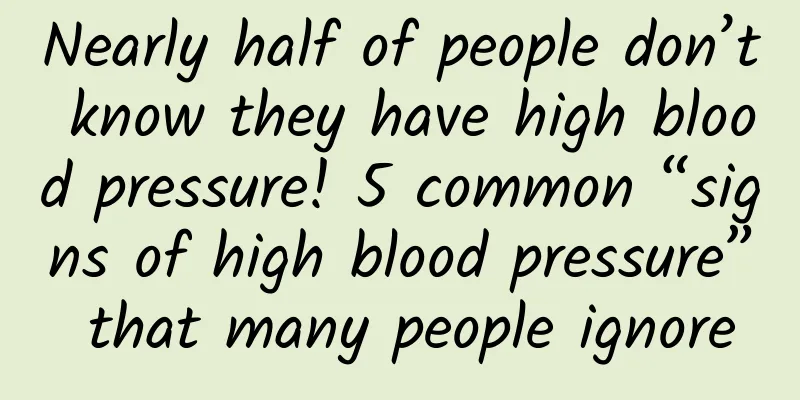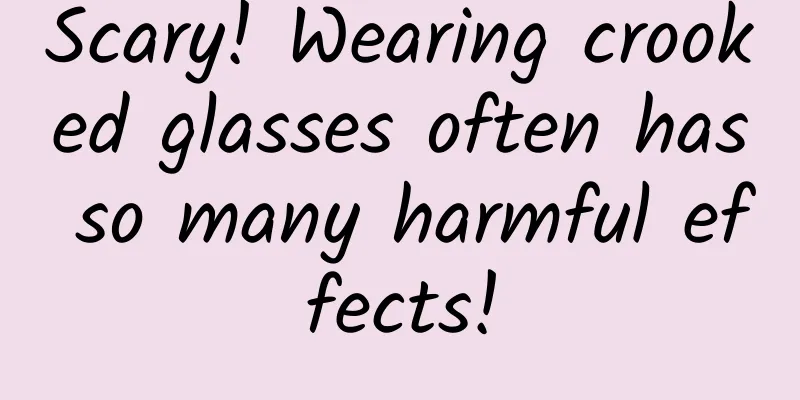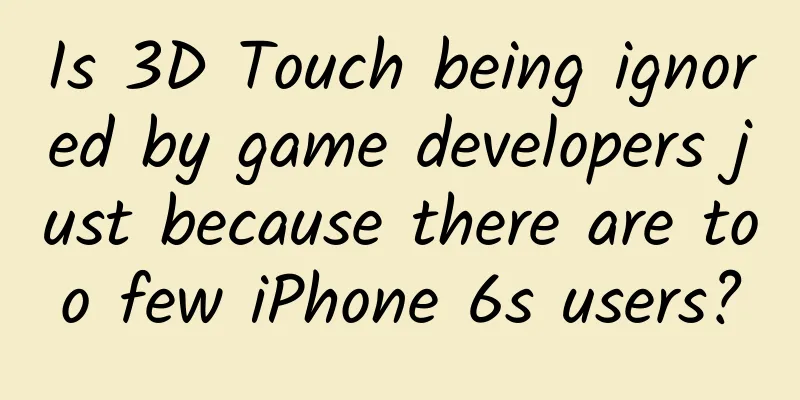Please don’t step on the grass! Is it okay to step on the grass?
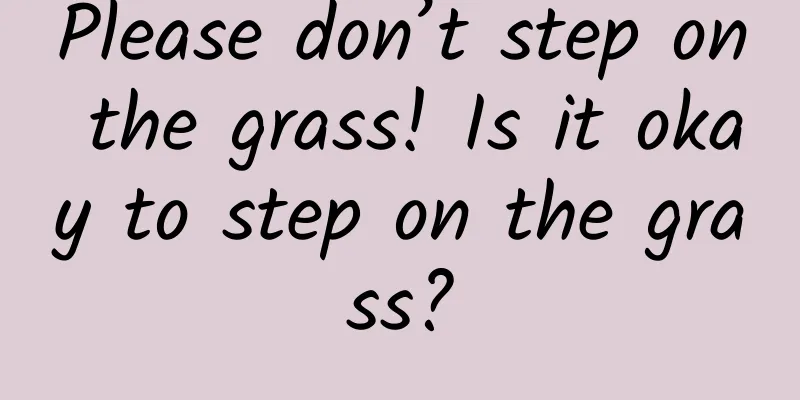
|
Produced by: Science Popularization China Author: Liu Ying (Wuhan Botanical Garden, Chinese Academy of Sciences) Producer: China Science Expo When walking in the park, do you often see slogans such as "The grass is smiling, please walk around it", "The grass is lingering, please be gentle with your feet", "If you love me, don't step on me"? Have you ever been unable to resist the excitement of having close contact with the furry and soft grass, but was pulled back by the moral sense hidden deep in your heart? Well, you are not alone. For a long time, stepping on the grass has been considered a sign of low quality. You must be wondering: Why is it forbidden to step on the grass in the park? Why is it allowed to step on the grass on golf courses and football fields? Are there any outdoor lawns where people can play happily? ... Don't worry, let's talk about "stepping on the grass" today. Park Lawn (Image source: pixabay) From the exclusive domain of the nobility to the common people: the history of lawns Whether lawns are natural or artificial is still a matter of opinion. In the Cihai dictionary, there is such a note: "A lawn is a whole piece of green ground in a garden that is cultivated by artificially laying turf or sowing grass seeds." Of course, modern lawns are not limited to gardens. They also often appear in many scenes such as sports fields, soil and water conservation areas, roadsides, airports, factories, etc., which in a sense reveals the artificial nature of modern lawns. According to scholars, Britain is one of the important origins of artificial turf. In the middle of the Middle Ages (about the 7th to 11th century), the Eastern Roman Empire (476-1453) invaded Western Europe, and turf technology arrived in Britain along with the iron hooves, daggers and shields of the Eastern Roman knights. They first planted short grass lawns in monasteries, orchards, etc., and in the 13th century, artificial lawns were established by sowing grass alone. Later, through the in-depth application of sheep grazing and mowing (cutting grass), lawn technology was widely developed, and the real artificial lawn was born. The original lawn can be said to be exclusive to the nobility. Its purpose was not to step on it, but to "show off wealth." In the late Middle Ages when productivity was not yet developed, food could not meet people's daily needs, and slightly fertile land was either used to grow crops or to raise sheep. However, the aristocratic gentlemen of the upper class prefer to maintain a large piece of artificial lawn in their manor or around their villa, without planting anything there and just leaving it empty. There is even a trend of regarding high-quality bentgrass lawns as a symbol of family prestige and style. This not only reduced their income, but also required a lot of extra expenses to maintain the lawn, which was completely out of reach for ordinary people. As a result, owning a small lawn became the privilege of the nobles and large estate owners, who called it pleasing to the eye, but in essence it was a naked symbol of status. The bigger the lawn and the more neatly it is trimmed, the more powerful the lord is. However, the lawns in front of the noble castles cannot be trampled at will. Generally, these precious lawns can only be used during important celebrations and social events. At other times, entry is strictly prohibited. Artificial lawn in the noble manor (Image source: pixabay) As lawns became more popular, more and more activities were carried out on them. People sat and rested on them, sang and danced, played bowling, cricket, tennis, golf, etc. Poets sang, writers wrote, and painters painted. The English poet Chaucer's phrase "green wool" is still popular today. After the Industrial Revolution in the 18th century, productivity increased significantly, and lawn technology also began to develop rapidly. In 1832, the British Edwin Budding invented the internal combustion harvester for lawn mowing, ending the era of sheep and sickles mowing the lawn, and about a century later, the modern lawn was officially born in the United States. People having fun on the lawn (Image source: pixabay) Have you ever wondered where the park lawns that are so closely related to our lives today came from? More than 100 years ago, Ebzer Howard, the founder of the British "Garden City Movement", realized the landscape and environmental value of green plants in cities. In 1889, he published the book "Garden Cities of Tomorrow". During his lifetime, he built two garden cities, pioneering new urban construction. After entering the 20th century, countries such as Australia, Japan, the United States, and China have begun to build urban green spaces . The amount of lawn green space has become one of the important indicators to measure the quality of modern urban environment and the level of civilization. Nowadays, all people enjoy the benefits brought by green grass. They are paradise for leisure and sightseeing, guardian of the ecological environment, and cradle of athletes. Children playing football on the green field (Image source: pixabay) Why are people not allowed to step on the lawn? After understanding the past and present of lawns, let’s get back to the topic: Why can we see “No Trampling” signs everywhere in green spaces and park lawns in many places? The most common view is that grass is life, and it is natural to protect plants. Gardeners work hard to sow grass seeds, and grass needs a certain amount of time and appropriate conditions to grow. Frequent trampling will damage the grass roots, which not only affects the healthy growth of the lawn, but also makes the hard work of the workers go to waste. Are you curious after reading this: if we don't allow people to step on the grass, why do we sometimes need to use a lawn mower to mow the lawn? From the perspective of caring for plants, it doesn't make sense. The root cause is that you are not just stepping on the grass, but also the soil underneath the grass. A lot of trampling can cause soil compaction or soil hardening, which prevents water and oxygen from penetrating into the grass root layer, is not conducive to root growth, and thus inhibits lawn growth. After frequent trampling, the lawn surface will be worn away, forming areas of exposed soil, and the potholes and depressions caused by trampling will damage the overall flatness of the lawn. These damaged lawns require more manpower, material resources, and financial resources to maintain, which not only makes the gardeners tired, but also greatly reduces the viewing experience of citizens. In short, the reason for prohibiting trampling on the lawn is actually very simple, which is to prevent excessive trampling . In fact, according to the preferences of the lawn, appropriate trampling and rolling will increase the density of the lawn, and more or less have a certain effect on suppressing weeds. If a blade of grass is stepped on eight or nine times a day, it will not only have fewer pests and diseases, but also grow thicker! However, at present, places with large areas of lawn are basically important gathering places for people, with large flow of people and uneven distribution of people. If it is trampled on without control, the only result will be to prove Mr. Lu Xun's famous saying: when more people walk on it, it becomes a road. Soil compaction (Photo source: veer photo gallery) Some lawns can actually be stepped on: A few things about grass seeds Whether the lawn can be stepped on or tolerated depends largely on the type of grass. According to the climate they adapt to, lawn grass can be roughly divided into warm-season lawn grass and cool-season lawn grass. Warm-season lawn grasses grow luxuriantly from summer to mid-autumn, and the above-ground parts of the plants turn yellow in late autumn or winter, while the underground rhizomes remain dormant over the winter. Cool-season lawn grasses are more cold-resistant, remaining evergreen or dormant in winter in some areas. They grow vigorously in spring and autumn, but cannot tolerate heat in summer. Generally speaking, cool-season lawns can be trampled as long as they are trampled in moderation, such as cool-season grass species such as meadow fescue, tall fescue, ryegrass, bentgrass, and red fescue. If it is heavily trampled , warm-season lawns are relatively resistant to trampling because they generally spread and grow, such as Zoysia japonica (commonly known as Manila grass), buffalo grass, bermudagrass, white clover, and horseshoe grass. However, warm-season lawns have the disadvantage of withering and turning yellow in winter, so many lawns will choose cool-season lawns that are relatively less resistant to trampling. Cool-season grass species: ryegrass (top), bluegrass (bottom left), bentgrass (bottom right) (Image sources: China Plant Image Library (top, bottom right); Veer Library (bottom left)) Warm-season grasses: Manila grass (top left), Bermuda grass (top right), Dicentra chinensis (bottom) (Image source: China Plant Image Library) In some foreign countries, the temperature does not vary much throughout the four seasons, so lawns grow vigorously all year round. However, in many areas of China, the four seasons are distinct , which makes it more difficult for lawns to grow. This is also the reason why there are few trampled lawns in China. According to the purpose and landscaping needs, the common lawns currently include landscape lawns, recreational lawns, sports lawns, and environmental protection lawns for slope protection and bank protection. The main function of landscape lawns is to be appreciated by people. They are mainly arranged at the entrances and exits of gates, around urban green sculptures, fountains and in front of urban architectural monuments. Visitors are generally not allowed to enter and trample on them. Its cultivation, maintenance and management techniques are strict. Generally, grass species with uniform green color, long green period, heat resistance and cold resistance are selected. Commonly used ones include bluegrass, ryegrass, and zoysia grass. Recreational lawns are lawns for visitors to walk, rest, play and engage in outdoor activities. They are large in area and are widely used in parks. Most of them are natural, and generally use grass species with fine leaves, strong toughness and good resistance to trampling, such as semi-fine-leaved Zoysia, tall fescue, bluegrass, buffalo grass, ryegrass, etc. Sports turf is a lawn specially designed for people to play sports. It can be seen in football fields, golf courses and some tennis courts. It is necessary to choose grass species that are elastic, resistant to frequent trampling, have strong sprouting ability and strong recovery ability, such as bentgrass, dogtooth grass, fescue hybrid, perennial ryegrass, etc. Environmental protection lawn for slope protection and bank protection is laid on slopes and water banks to prevent soil erosion. It covers the ground to prevent secondary dust and plays the role of keeping the loess from being exposed to the air. It requires the grass species to have strong adaptability to the environment and tolerance to extensive management. It is best to choose local native lawn grass species. Commonly used ones are buffalo grass, zoysia grass, sheep's beard, tall fescue, etc. After reading so many introductions to grass species, you may be dizzy. In summary, whether a lawn can be trampled is determined by a variety of factors, including its grass species, purpose, cost, and the owner's opinion. In different regions of my country, the choice of grass species also varies depending on climate, soil, and precipitation. Next, let me introduce you to a magical "happy grass" . CCTV News once reported an "ecological green barrier" located in the Jiziwan section of the Yellow River in Inner Mongolia, which was paved with "happy grass" that is resistant to trampling. "Happy grass" is a hybrid lawn that is resistant to trampling . It has a maximum service life of more than ten years. It is tough and resistant to trampling, providing a smart solution for the ecological restoration of the Inner Mongolia section and building a solid green barrier. (Photo source: CCTV News) You wouldn’t have thought that there is so much knowledge hidden behind whether to step on it or not! Conclusion As the pace of life quickens, people's demand for getting closer to nature is growing. At present, more and more cities are adopting various methods to gradually expand the area of trampled lawns, such as using newly developed trample-resistant grass seeds and taking turns to open and maintain lawns. Many leisure and entertainment venues have also begun to use large lawns for games and relaxation as a highlight, and there are endless ways to play on the lawns, such as camping, picnics, and kite flying. Next time you want to get close to nature, check if there are fences or signs to protect the lawn, and then go and have fun! (Specific details depend on local conditions) References: 【1】Sun Jixiong. Turfgrass Science[M]. Beijing: China Agriculture Press, 1995. 【2】Chen Zhiyi. A preliminary study on the origin and evolution of lawns, and on the concept of lawns[J]. Grassland and Lawn, 2001(03):9-13+17. 【3】Ren Jizhou, Zhang Zihe. Grassland and human civilization[J]. Grassland and Lawn, 2000(01):5-9. 【4】Luo Aiying. Lawn classification and its application in landscaping[J]. Shanxi Forestry, 2014(05):45-46. [5] China Flower News: It’s the outing season, can we walk on the lawn? |
>>: Counting: Ancient Chinese Mathematical Wisdom on Small Sticks
Recommend
Android animation - cute candle blowing animation
1. Introduction Recently I started writing some a...
A new breakthrough in transparent materials! The "black technology" of supramolecular glass
Produced by: Science Popularization China Author:...
How can we build an elevator to go to space and fix it to the rotating earth? There is no need to fix it
Space elevator, a concept that sounds very sci-fi...
Tik Tok Swift compilation optimization - 60% faster compilation based on custom Toolchain
The optimization solution is based on the Swift T...
If you want to learn Android, you might as well listen to how engineers are trained
Interested in Android but don't know how to g...
55-inch 4K cost-effective king Fengxing TV unboxing photos
A 55-inch 4K TV can be bought for less than 3,000...
3 Spring Festival marketing strategies of Moutai, Nongfu Spring and Jiang Xiaobai
Many marketers are aware of the concepts of "...
How to use data to drive scale growth?
The data system is not only the basis of your sci...
Volkswagen is selling off another brand, this time it's Ducati
According to Reuters, two people familiar with th...
When hot water and cold water are put into the refrigerator together, why does the hot water freeze first?
Image source: Pixabay In the hot summer, if you a...
How do communities with millions of members operate?
Since 2016, countless knowledge payment platforms...
Information flow advertising creativity, 3 tricks you can’t miss!
I still remember that in September last year, 16 ...
She was considered to win the Nobel Prize and said "I do" three times for her country
1964 Lop Nur in Xinjiang China's first atomic...
Update as soon as possible! Apple releases iOS 15.2.1: fixes major vulnerabilities on iPhone and iPad
Earlier today, Apple launched iOS 15.2.1 and iPad...

